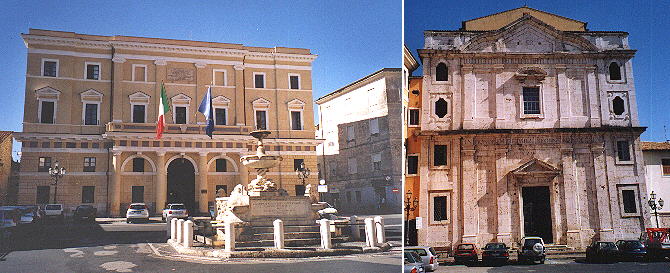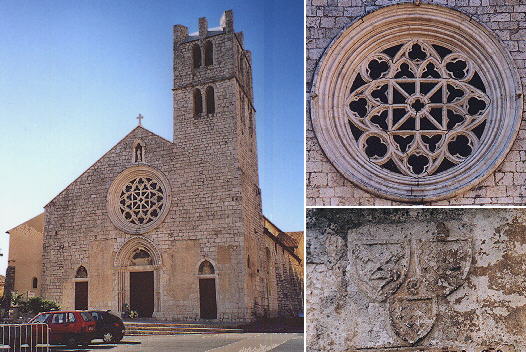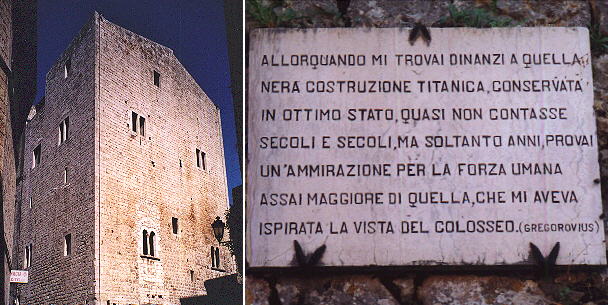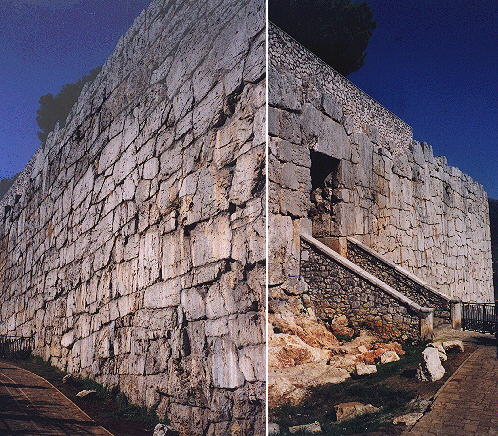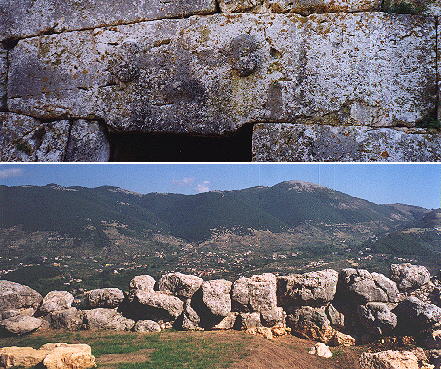  Ferdinand Gregorovius' Walks - Alatri
Gregorovius found Alatri a very rich town in comparison with Ferentino. The 1863 map I use
to illustrate the itineraries of this section, clearly indicates that Alatri was at that time the
most important town in the area (today Frosinone is more important). The wealth of
Alatri came from wool and felt-hat factories. He saw many recent buildings and even a fountain which
showed the prosperity of Alatri.
The most interesting church in Alatri is S. Maria Maggiore, known in particular for its fine rose-window which quite unusually is designed around a square. On the side of the church one can see an inscription with the coat of arms of Bonifatius IX (1389-1404): the reference to the pope (keys of St Peter) is separate from the family coat of arms.
Alatri has a few interesting medieval buildings, some of them in the form of a tower. Gregorovius was very highly impressed by the colossal walls which surround the acropolis of Alatri and wrote that he admired these walls as an example of human strength more than the Colosseum in Rome. The area around the acropolis had been cleaned just a few years before Gregorovius visited it. On the occasion of the visit of pope Gregorius XVI, the citizens of Alatri had all worked for ten days to clean the walls and build an access to the upper part of the acropolis.
The colossal walls of Alatri are made by layers of gigantic stones: at some points there are up to 14 layers of stones. There are only two accesses to the top of the acropolis.
One of the two gates has still on the top two phallic symbols: these symbols were very common on Roman gates and they meant good luck for those who went through the gates. From the top of the acropolis one has an excellent view over the Ernici Mountains.
Gregorovius ends his account by describing a visit to nearby Certosa di Trisulti, a Carthusian monastery where he spent a night. Introductory page on Ferdinand Gregorovius Ferentino Other walks: The Roman Campagna: Palestrina Genazzano Paliano Anagni The Volsci Mountains: Valmontone Segni Norma Cori On the Latin shores: Anzio Nettuno and Torre Astura Circe's Cape: Terracina San Felice The Orsini Castle in Bracciano Subiaco, the oldest Benedictine monastery See my Home Page on Baroque Rome or my Home Page on Rome in the footsteps of an XVIIIth century traveller. |
All images © 1999 - 2003 by Roberto Piperno. Write to romapip@quipo.it
